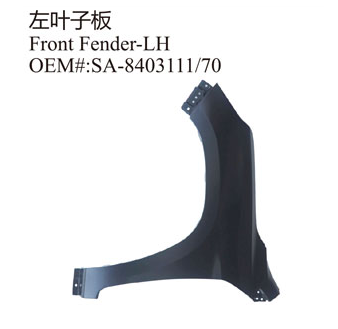Because the brake pads of automobile parts are consumables, the more driving kilometers, the worse the wear of the brake pads. When the wear reaches the critical point, it must be replaced.
Generally speaking, under normal driving conditions, we should check the brake pads every 5000 kilometers. In addition to checking the remaining thickness, we also need to check the surface wear condition, such as whether there are differences in the degree of wear between the left and right sides, and whether the return is comfortable.

Brake pads are composed of friction material and iron liner. Don't wait until the friction material is polished. This will reduce the braking effect and bring greater security risks. Now many vehicles have brake pad alarm function, which will remind the owner to replace when the wear limit is reached. The owner also needs to pay more attention to it.
In addition, the replacement parts should be provided by the original factory, so that the braking effect between the brake pad and the brake disc is good and the running-in time is reduced. After replacement, the owner must first step on several brakes to eliminate the gap between the abrasive pad and the brake disc.
Generally, the new brake pads need to be run in about 200 kilometers to achieve good braking effect. Therefore, the owner must be cautious when he has just changed the brake pads.
Three simple tips to teach you how to self-check brake pads.
Begging others is better than asking oneself. Here we introduce several simple and effective methods of self-checking brake pads, which are time-saving, money-saving and "one sense, two hearings and three checks".
First, feeling strength. Do you feel like you can't stop while driving? If the brake feels laborious, it is likely that the brake pads become soft, thin and almost lose friction.
2. Listen to the voice. If there is a scream of "iron rubbing" accompanied by a light brake, the brake pads must be replaced immediately. This noise is caused by the direct friction of the limit marks on both sides of the brake pads. In this case, the car owner must also check the brake disc incidentally. Since the price of the brake disc is higher than that of the brake pad, it is suggested that we should check the brake pad regularly to avoid damaging the brake disc.
3. Check thickness. The normal thickness of the brake pad is generally about 1.5 cm, and the friction thickness will gradually become thinner as the number of times of use increases. When we use the naked eye to observe that the thickness of the brake pad is only about 1/3 of the original thickness (about 0.5cm), the owner should increase the frequency of self-inspection and be ready to change at any time. Generally speaking, after driving 60,000 kilometers or so, the owner should consider replacing.
Copyright By © Jiangsu Halreal Vehicle Industry Co., Ltd. 技术支持:翊成网络